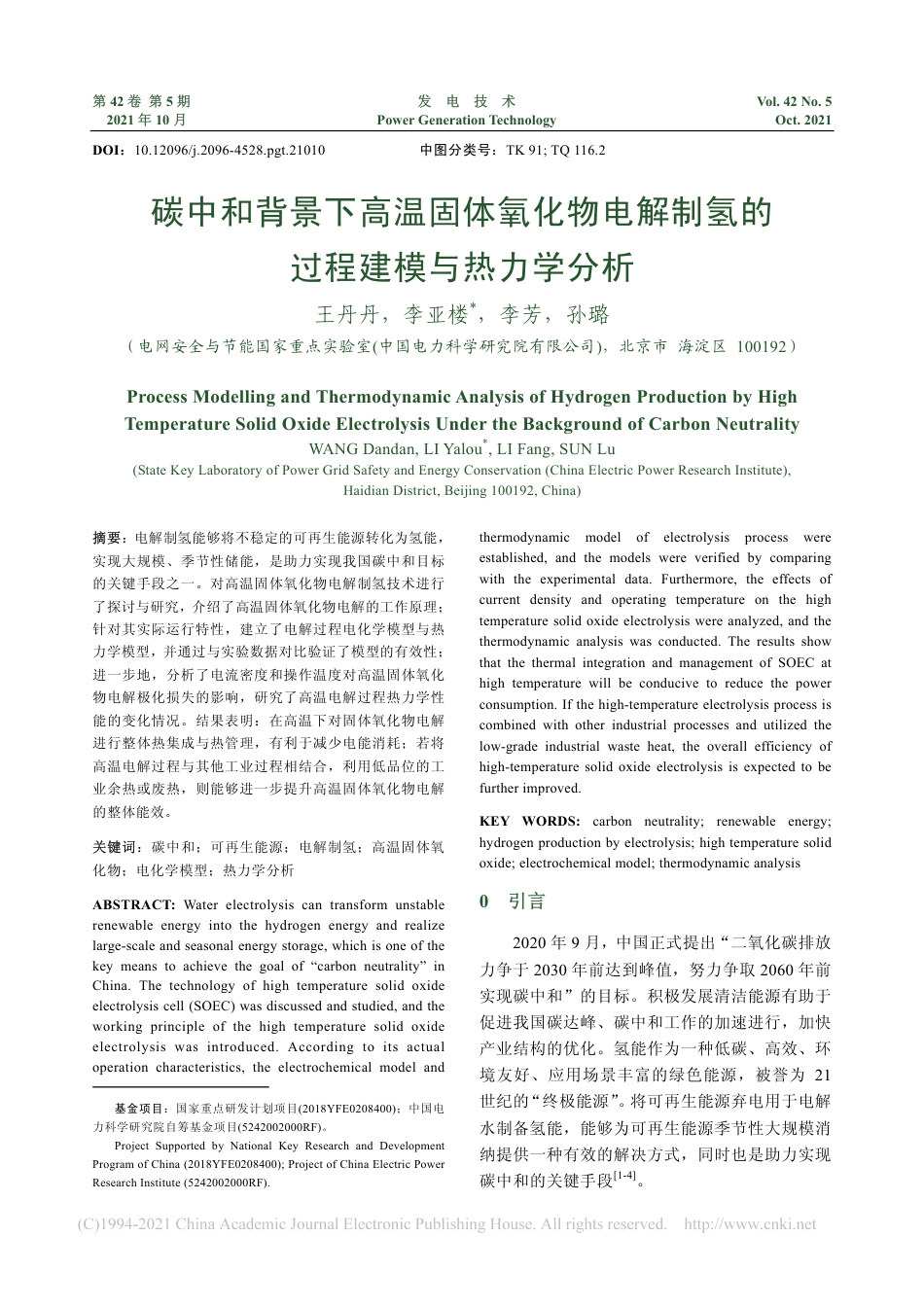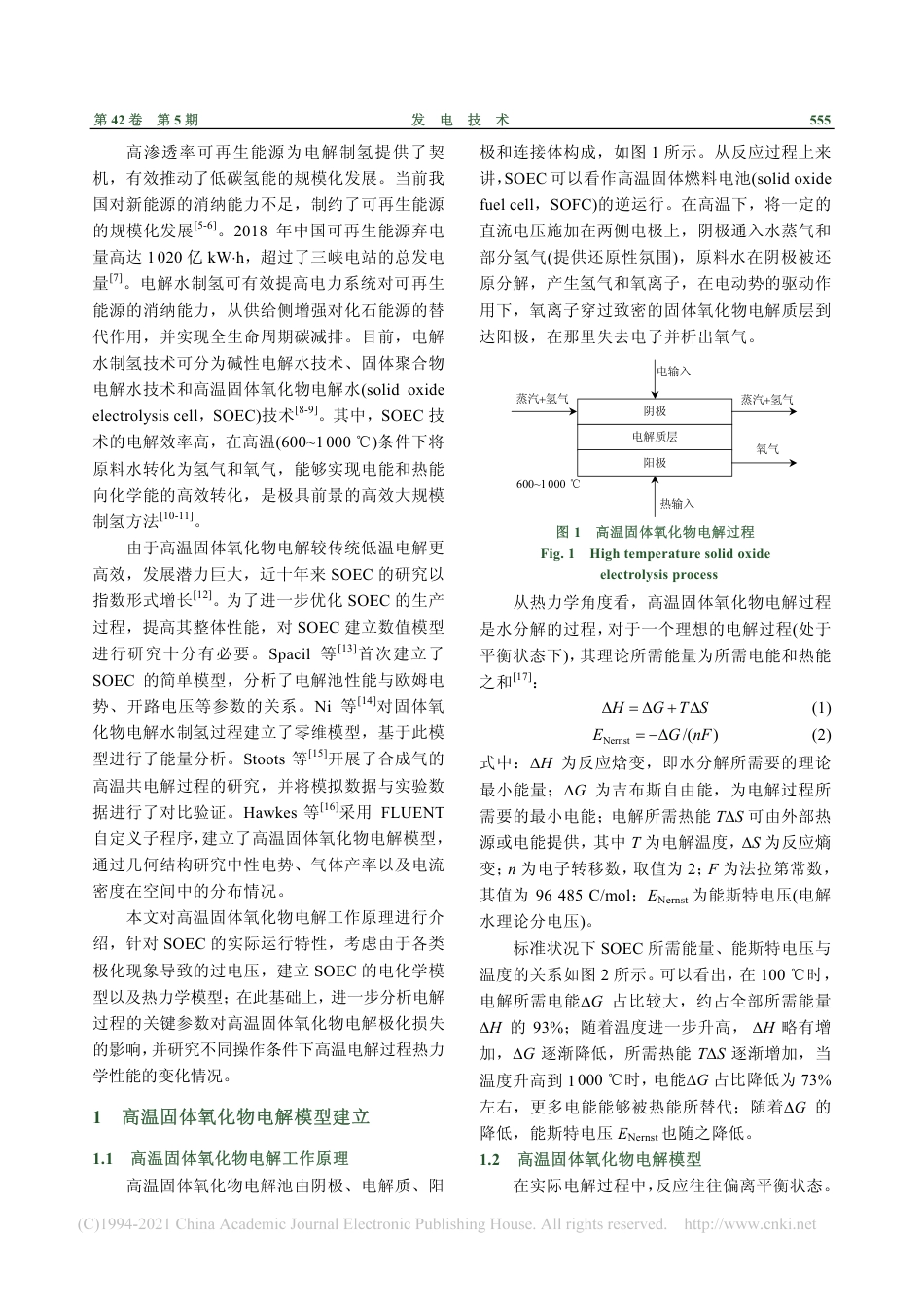第 42 卷 第 5 期 发 电 技 术 Vol. 42 No. 5 2021 年 10 月 Power Generation Technology Oct. 2021 DOI:10.12096/j.2096-4528.pgt.21010 中图分类号:TK 91; TQ 116.2 碳中和背景下高温固体氧化物电解制氢的 过程建模与热力学分析 王丹丹,李亚楼*,李芳,孙璐 (电网安全与节能国家重点实验室(中国电力科学研究院有限公司),北京市 海淀区 100192) Process Modelling and Thermodynamic Analysis of Hydrogen Production by High Temperature Solid Oxide Electrolysis Under the Background of Carbon Neutrality WANG Dandan, LI Yalou*, LI Fang, SUN Lu (State Key Laboratory of Power Grid Safety and Energy Conservation (China Electric Power Research Institute), Haidian District, Beijing 100192, China) 摘要:电解制氢能够将不稳定的可再生能源转化为氢能,实现大规模、季节性储能,是助力实现我国碳中和目标的关键手段之一。对高温固体氧化物电解制氢技术进行了探讨与研究,介绍了高温固体氧化物电解的工作原理;针对其实际运行特性,建立了电解过程电化学模型与热力学模型,并通过与实验数据对比验证了模型的有效性;进一步地,分析了电流密度和操作温度对高温固体氧化物电解极化损失的影响,研究了高温电解过程热力学性能的变化情况。结果表明:在高温下对固体氧化物电解进行整体热集成与热管理,有利于减少电能消耗;若将高温电解过程与其他工业过程相结合,利用低品位的工业余热或废热,则能够进一步提升高温固体氧化物电解的整体能效。 关键词:碳中和;可再生能源;电解制氢;高温固体氧化物;电化学模型;热力学分析 ABSTRACT: Water electrolysis can transform unstable renewable energy into the hydrogen energy and realize large-scale and seasonal energy storage, which is one of the key means to achieve the goal of “carbon neutrality” in China. The technology of high temperature solid oxide electrolysis cell (SOEC) was discussed and studied, and the working principle of the high temperature solid oxide electrolysis was introduced. According to its actual operation characteristics, the electrochemical mode...



